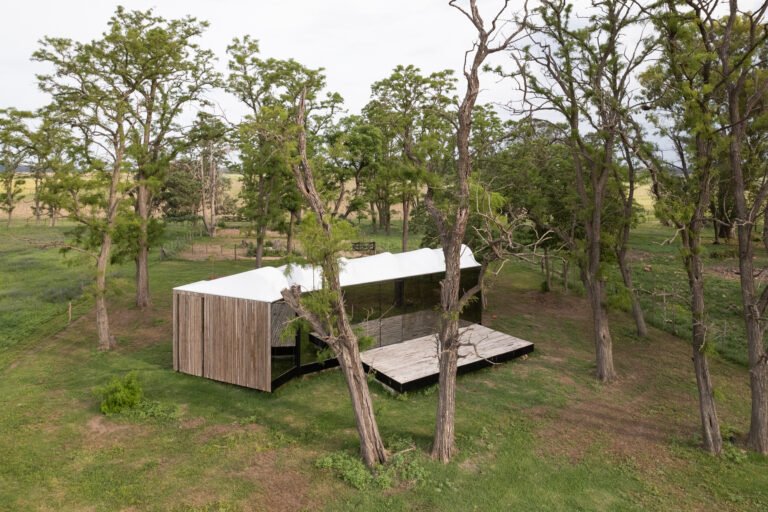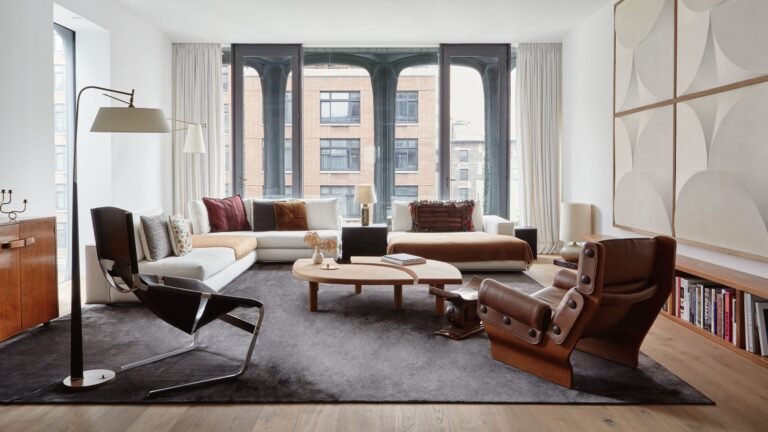Pittsburgh is the latest city to gain a freeway capping park
With the completion of the $32 million Frankie Pace Park, Pittsburgh has joined the likes of Dallas, Seattle, and other cities where neighborhoods have been disconnected and the urban fabric disrupted by major freeway projects only to, years later, be stitched back together by a roadway-covering deck structure topped with public green space.
Inaugurated last November, the three-acre Frankie Pace Park—known prior to its formal naming as the Urban Connector or simply The CAP—is the latest example of a North American freeway cap park blanketing a sizable stretch of car-centric infrastructure. In this case, a section of Interstate 579/Crosstown Boulevard that’s construction during the 1950s and 60s permanently severed two once-linked neighborhoods: Pittsburgh’s historic Hill District and the city’s downtown core.
As detailed in a recent press release from the nonprofit Pittsburgh Green Story, dozens of homes and businesses were demolished and thousands of residents were displaced in the city’s Lower Hill neighborhood to make way for Crosstown Boulevard and the old Civic Arena, former home to the NHL’s Pittsburgh Penguins. The massive urban renewal project effectively severed downtown Pittsburgh from the Hill District, a historically Black section of the city that subsequently went into economic decline after it was cut off from the rest of the city. The arena, which debuted in 1961, was permanently closed in 2010 with demolition work beginning the following year. It is now the site of a parking lot for the Penguins’ current home, the Populous-designed PPG Paints Arena.
“A great injustice was done in the ’50s,” said Pennsylvania Governor Tom Wolf at a November 22 ribbon-cutting ceremony. “And this is finally a way to address that injustice.”
“This project is a fantastic example of what we can accomplish when we come together to invest in our infrastructure,” added Wolf in a statement. “An investment in infrastructure is an investment in communities and the people who bring them to life. This is what innovative, ambitious, community-centered infrastructure investment looks like, and my administration was proud to support this project through state investment.”
Highway overpass to @CitiParks space.
Yesterday, #Pittsburgh cut the ribbon on Frankie Pace Park or “The CAP”.
This is part of our efforts to reconnect @DowntownPitt with #Pittsburgh’s Hill District. It’s one step forward in righting the old wrongs of urban renewal. pic.twitter.com/EQqcLY8XR8
— City of Pittsburgh (@Pittsburgh) November 23, 2021
Located near the Steel Plaza subway station and bounded by Washington Place, Centre Avenue, Chatham Street, and Bigelow Boulevard, Frankie Pace Park doesn’t just function as a newly established direct link between two long-severed parts of Pennsylvania’s topographically challenging second-largest city. The City of Pittsburgh-owned and -operated park also provides visitors with the historical context of the site by paying homage to famous Hill District figures via story walls featuring abolitionist and educator Martin Delaney and the park’s namesake Frankie Mae Pace, a community activist and music shop owner who headed the Hill District Community Council. Pace died in 1989.
In addition to references to the area’s history, the park, which is crisscrossed with ADA-accessible pedestrian and bike paths, features dedicated recreation, performance, and education areas including an outdoor classroom garden. The park also features a water course and rain gardens that serve as part of an innovative stormwater management system while contributions from (predominately) local artists, who played an integral role in the park’s design, can be found throughout the freeway-topping space. A major public art component is a colored pattern paving of the mythical Sankofa bird, which flies forward while also looking backward. (The image of the Sankofa bird also plays a major role at Destination Crenshaw, an in-progress Black cultural corridor in South Los Angeles.)
“The whole idea of integrating public artwork early into the design is the preferred method because it engages the artist into a better way to tell their stories instead of just having a piece of artwork that may have been in their warehouse and plopped down later,” Fred Bonci, founding partner of local landscape architecture and urban design firm LaQuatra Bonci Associates, explained to Pittsburgh public radio affiliate WESA in January.
In addition to the substantial involvement of three artists with connections to the Hill District (and one Baltimorean artist), Frankie Pace Park was brought to life by a large project team that included LaQuatra Bonci Associates, designer/engineer HDR, and general contractor Joseph B. Fay Co. along with A&A Consultants, American Geotechnical & Environmental Services, Cardno TBE, Collective Efforts, Monaloh Basin Engineers, and Santangelo & Lindsay. Cultural resource management firm Christine Davis Consultants was also involved in the creation of the park.
Residents of the Hill District and other community stakeholders were involved with the design process from the beginning, with the first public working meeting for the project being held in March 2016. Led by the city’s Sports & Exhibition Authority (SEA) in collaboration with the Office of Public Art (OPA), the search for local artists to join the design team kicked off later in that year; a four-day design charette was held in December 2016. The four artists and designers ultimately selected for the project were Amir Rashidd, Kimberly C. Ellis, Lakeisha Byrd, and Jann Rosen-Queralt.
“The creation of this park was a community-focused project from start to finish,” said Governor Wolf upon the project’s debut. “This project has turned a space of division into a space of connection.”
Approval was given to the finalized design plan in November 2017 by the City of Pittsburgh Public Art Commission; nearly a year later, the City of Pittsburgh Planning Commission gave its final sign-off on the project’s Land Development Plan. Like other major infrastructure projects, work on the freeway cap park was actually aided by the pandemic in that construction was able to move along more quickly once work resumed due to a sharp decrease in traffic to and from the then-shuttered PPG Paints Arena.
Frankie Pace Park’s $32 million price tag was covered by a range of local, state, and federal sources as well as from charitable organizations including, among others, Heinz Endowments and the Richard King Mellon Foundation.
Repairing the damage done by community-fracturing mid-century urban renewal projects has been a focus area of U.S. Transportation Secretary Pete Buttigieg and the Biden administration. The Reconnecting Communities Initiative was a notable part of the White House’s blockbuster $1.2 trillion infrastructure bill that cleared the Senate this past August. The $1 billion pilot grant program, dramatically slashed from a proposed $20 billion, commits to investing in and, when possible, fusing back together historically Black neighborhoods in cities like New Orleans and Rochester, New York, that were devastated by interstate highway construction projects. As Buttigieg said last April: “There is racism physically built into some of our highways.”
While Frankie Pace Park was not a recipient of grant funding dispersed through the Department of Transportation’s Reconnecting Communities Initiative, there’s no doubt that Pittsburgh, a city populated by a superlative number of bridges in varying conditions, will benefit from other funds allocated as a result of the infrastructure bill’s passage.


